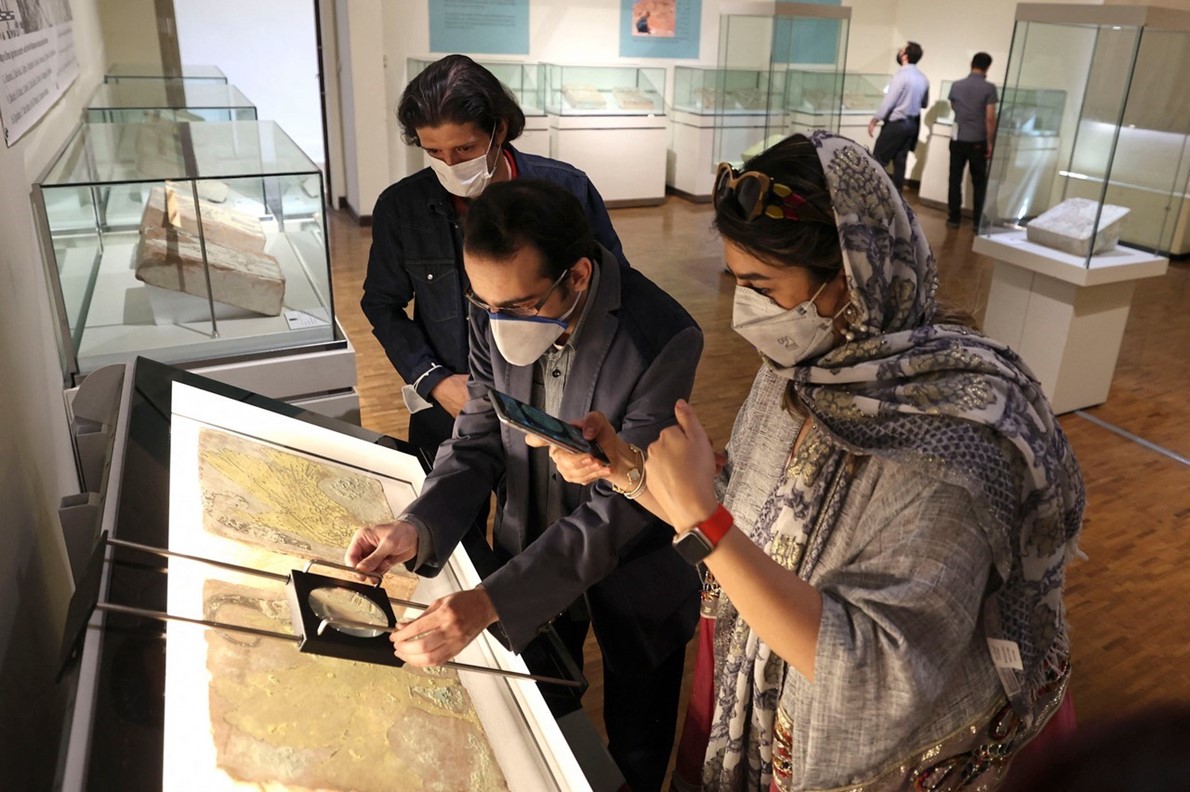TEHRAN — Decorated glazed bricks almost
3,000 years old are on display at
Iran’s National Museum after a four-decade
search disrupted by war and an international legal battle.
اضافة اعلان
Lions and winged cows with human heads, horses and
bulls with a goat’s horn, kneeling men and women and other mythological figures
decorate the work, created by the Mannaeans who lived in northwestern Iran in
the first millennium BC.
The 51 square bricks are painted with a glazed
coating on a black, brown, light blue, yellow or white background.
Their discovery and repatriation “is a series of
incredible adventures,” Youssef Hassanzadeh, an archaeologist with the museum,
told AFP.
It is also the latest example of
Middle Eastern and African countries recovering stolen antiquities which have ended up in Western
countries.
According to Hassanzadeh, the story began after the
1979 Islamic revolution when a farmer, Mirza Ali, discovered painted ceramic
bricks while cultivating his field. They had been used to decorate a temple
near his village in West Azerbaijan province.
“People were looting and selling glazed bricks,
taking advantage of the absence of government control,” said Hassanzadeh, who
organized the exhibition at the museum, where visitors peer at the bricks
through glass cabinets.
‘A unique collection’
A few years later in 1985, during war with
Iraq, Iranian authorities
sent a group of archaeologists, protected by soldiers, to the village. They
started to dig and seized some bricks but it was too late for the others.
Smugglers had already shipped some of them overseas,
where a number entered private collections and museums, the archaeologist said.
The story took a new turn when the
British Museum learned that an Iranian family had offered to sell a set of glazed bricks in
Chiasso, on the Italian-Swiss border. In 1991, the museum sent its curator John
Curtis to purchase the collection.
But Curtis realized the bricks came from the West
Azerbaijan site “and advised the British Museum and other European museums not
to buy it, because it is a unique collection which must not be divided and must
be returned to its country of origin,” Hassanzadeh said.
 Visitors attend an exhibition entitled the Repatriated Boukan Glazed Brick Collection from Switzerland, at Iran’s National Museum in Tehran on April 16, 2022.
Visitors attend an exhibition entitled the Repatriated Boukan Glazed Brick Collection from Switzerland, at Iran’s National Museum in Tehran on April 16, 2022.
The Iranian owner of the collection had a different
view. He was not prepared to return the artifacts from Switzerland.
“In 2008, the Swiss police seized the objects. The
case went to court. French archaeologist Remy Boucharlat, who led excavations
in Iran, confirmed the collection’s “identity”, the Tehran-based museum said in
a statement.
Legal proceedings dragged on for more than a decade,
with a lawsuit filed by the National Museum in 2015, and pressure from Iranian
diplomats.
“Finally on December 20, 2020, the collection
returned to us,” said Jebrael Nokandeh, curator of the National Museum which is
exhibiting the bricks until Tuesday.
A separate drawn-out legal saga concluded in
October, 2019 when the National Museum opened an exhibition of around 300
cuneiform clay tablets returned from the US.
Other artifacts have also come back, but with far
fewer complications.
Nokandeh, who is also an archaeologist, said a
descendant of a Frenchman who lived in Iran during World War II approached
Iran’s cultural adviser in Paris last year to say “that he had a collection of
Iranian antiquities.”
Those 29 pieces, from the Bronze Age to the Islamic
period, are now also on display at the museum, while the quest to recover other
stolen and lost artifacts from the country’s rich history continues.
“We are in talks with the
US as well as with Australia to
return objects,” Nokandeh said.
Read more Culture and Arts
Jordan News



